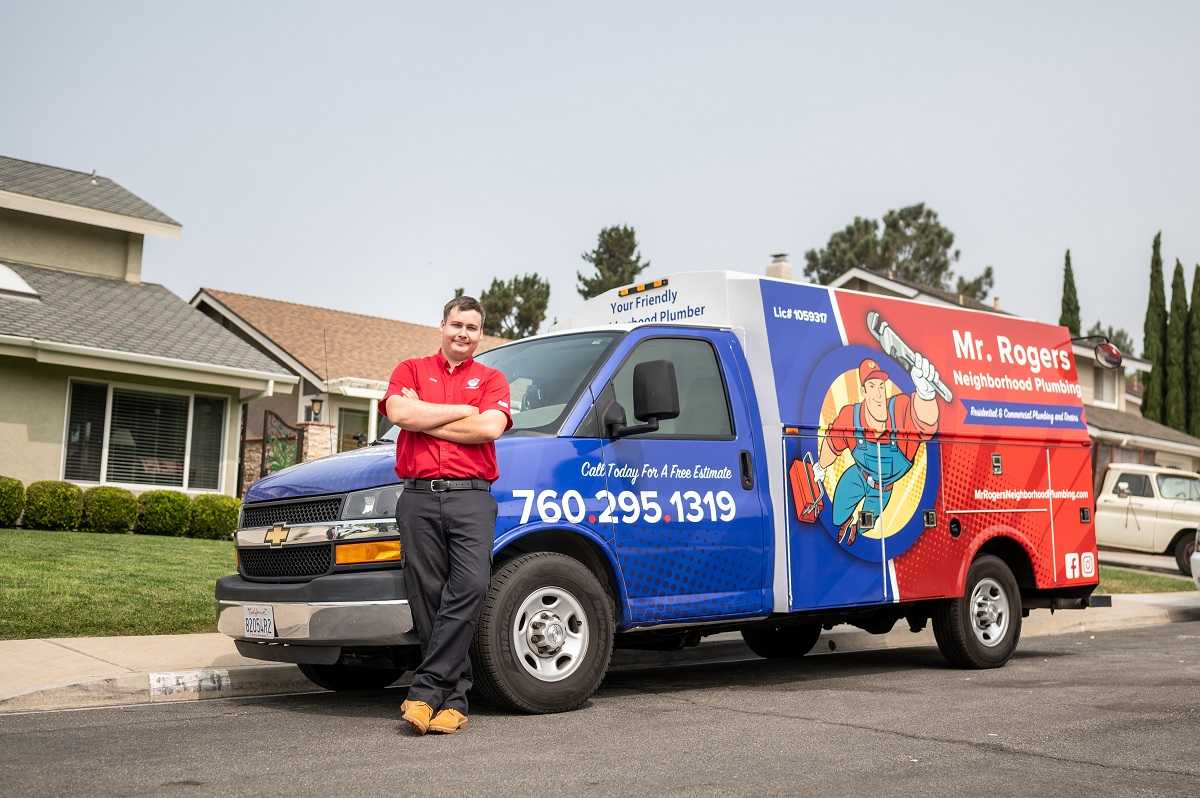Business
The Dangers of DIY Plumbing: Oceanside Plumber’s Warning

Common DIY Plumbing Mistakes
We want to highlight common DIY plumbing mistakes and provide examples to help you understand why professional assistance is crucial.
- Incorrect Pipe Sizing
- Mistake: One of the most frequent errors is using the wrong size of pipes for a plumbing project. Homeowners often assume that any pipe will do, but plumbing systems are meticulously designed, and using incorrect pipe sizes can disrupt water pressure and lead to leaks.
- Example: Imagine a homeowner replaces a section of 3/4-inch pipe with a 1/2-inch pipe during a bathroom renovation. This seemingly minor change can cause reduced water flow to the shower, affecting its performance and leading to frustratingly low water pressure.
- Improper Joint Connections
- Mistake: Connecting pipes and fittings securely is crucial for preventing leaks. DIY enthusiasts often use incorrect materials or fail to properly seal joints, resulting in water seepage.
- Example: A homeowner decides to replace a leaky pipe under the kitchen sink. Instead of using the appropriate plumber’s tape and sealant, they rely on a simple twist connection. Over time, the joint loosens, leading to a slow but persistent leak that eventually causes water damage to the cabinetry and flooring.
- Failure to Comply with Oceanside’s Plumbing Codes
- Mistake: Local plumbing codes are in place to ensure safety and efficiency in plumbing systems. Ignoring these regulations can result in systems that are not only ineffective but also hazardous.
- Example: An enthusiastic DIYer installs a new water heater without obtaining the necessary permits or adhering to local codes. This oversight can lead to serious safety issues, such as improper venting of gas water heaters, which poses a risk of carbon monoxide poisoning.
Why Professional Plumbers are Essential
Short-Term and Long-Term Risks of Faulty DIY Plumbing
- Water Damage
- Short-Term Risks: Incorrectly installed or repaired pipes can leak, causing immediate water damage. Even small leaks can lead to significant problems if not addressed promptly.
- Long-Term Risks: Over time, persistent leaks can weaken structural elements of your home, such as beams and foundations. This weakening can compromise the integrity of your property, leading to costly repairs and potential safety hazards.
- Mold Growth
- Short-Term Risks: Water from leaks creates a damp environment, ideal for mold growth. Mold can begin to develop within 24-48 hours in wet conditions.
- Long-Term Risks: Prolonged exposure to mold can have serious health implications, including respiratory issues, allergies, and other illnesses. Mold remediation can be an expensive and extensive process, often requiring the removal of affected materials and thorough cleaning.
- System Failures
- Short-Term Risks: DIY plumbing mistakes can lead to immediate failures in the plumbing system. For instance, improper installation of water heaters or pressure-relief valves can result in significant malfunctions.
- Long-Term Risks: Ongoing issues with improperly repaired plumbing can cause complete system failures. This includes sewage backups, burst pipes, and water supply interruptions, all of which can be disruptive and costly to repair.
Financial Implications of Water Damage
- Property Damage
- Impact: Water damage can ruin flooring, walls, and ceilings, leading to substantial repair costs. In severe cases, extensive reconstruction may be necessary to restore the home’s structural integrity.
- Example: Imagine a minor leak under a sink that goes unnoticed for months. The constant exposure to water damages the cabinetry, flooring, and even the subfloor, resulting in thousands of dollars in repair costs.
- Damage to Belongings
- Impact: Personal belongings, such as furniture, electronics, and clothing, can be destroyed by water damage. Irreplaceable items, such as family heirlooms and photographs, are especially vulnerable.
- Example: A burst pipe in a laundry room can flood adjacent areas, soaking and damaging everything in its path. The financial and emotional cost of losing cherished possessions can be significant.
- Increased Utility Bills
- Impact: Leaking pipes and inefficient plumbing systems can lead to higher water bills. Even small leaks can waste a considerable amount of water over time, increasing utility costs.
- Example: A continuously running toilet or a slow leak in a pipe can add hundreds of dollars to your annual water bill, money that could have been saved with a timely professional repair.
The Legal and Insurance Implications
Legal Repercussions of Non-Compliant Plumbing Work
- Violations of Oceanside’s Building Regulations
- Non-Compliance: Oceanside has specific building codes and regulations designed to ensure the safety and efficiency of plumbing systems. DIY plumbing often fails to meet these standards, leading to non-compliance issues.
- Consequences: Violating local building codes can result in fines, penalties, and the requirement to redo the work properly. In severe cases, non-compliant plumbing can lead to legal action from the city or county.
- Example: A homeowner installs a new bathroom without obtaining the necessary permits or adhering to plumbing codes. An inspection reveals multiple code violations, resulting in hefty fines and the mandate to hire a licensed plumber to correct the issues.
- Property Resale Complications
- Disclosure Requirements: When selling a property, homeowners are legally required to disclose any unpermitted work or code violations. Non-compliant plumbing can significantly complicate the resale process.
- Impact: Potential buyers may be deterred by the prospect of inheriting plumbing issues, leading to decreased property value or prolonged time on the market.
- Example: A DIY enthusiast adds a kitchenette to their basement without following proper plumbing regulations. When it comes time to sell, the unpermitted work must be disclosed, and buyers may demand a lower price or request that the work be redone by a professional.
Insurance Implications of DIY Plumbing
- Effect on Homeowners’ Insurance Claims
- Denied Claims: Insurance companies require that all home repairs and modifications comply with local codes and are performed by licensed professionals. Unauthorized DIY plumbing can void your insurance coverage, leading to denied claims.
- Example: A burst pipe causes extensive water damage in a home. The homeowner’s insurance claim is denied because the pipe was installed incorrectly during an unpermitted DIY project.
- Policy Standings and Premiums
- Increased Premiums: Non-compliant plumbing work can result in higher insurance premiums. Insurers may view the home as a higher risk, leading to increased costs for coverage.
- Policy Cancellation: In extreme cases, repeated instances of unauthorized repairs and resulting damage can lead to the cancellation of a homeowner’s insurance policy.
- Example: A homeowner repeatedly attempts DIY plumbing fixes that lead to multiple claims for water damage. The insurance company raises the premium significantly or cancels the policy due to the increased risk.
Signs and Situations Requiring a Professional Plumber
- Major Leaks
- Signs: Visible water pooling, damp spots on walls or ceilings, and a sudden increase in water bills are all indicators of significant leaks.
- Importance: Major leaks can cause extensive water damage, mold growth, and structural issues if not addressed promptly and correctly.
- Example: A burst pipe in your basement is causing flooding. Attempting to fix this yourself could lead to further damage and complications. A professional plumber can quickly locate the source, stop the leak, and repair the pipe to prevent future issues.
- Renovations Involving Plumbing
- Situations: Any home renovation that involves moving, adding, or altering plumbing fixtures requires professional intervention to ensure compliance with local codes and proper installation.
- Importance: Incorrect plumbing work during renovations can lead to leaks, water damage, and costly repairs down the line.
- Example: You’re remodeling your kitchen and need to relocate the sink and dishwasher. A professional plumber will ensure that all plumbing connections are secure and up to code, preventing future leaks and ensuring the functionality of your new kitchen.
- Installation of New Fixtures
- Situations: Installing new fixtures like water heaters, toilets, or faucets can be complex and requires precise connections to avoid issues.
- Importance: Proper installation ensures optimal performance and longevity of the fixtures, while incorrect installation can result in inefficiencies and damages.
Example: You’ve purchased a new tankless water heater to replace an old unit. Professional plumbers have the expertise to handle the installation safely, ensuring that it works efficiently and meets all safety regulations.






